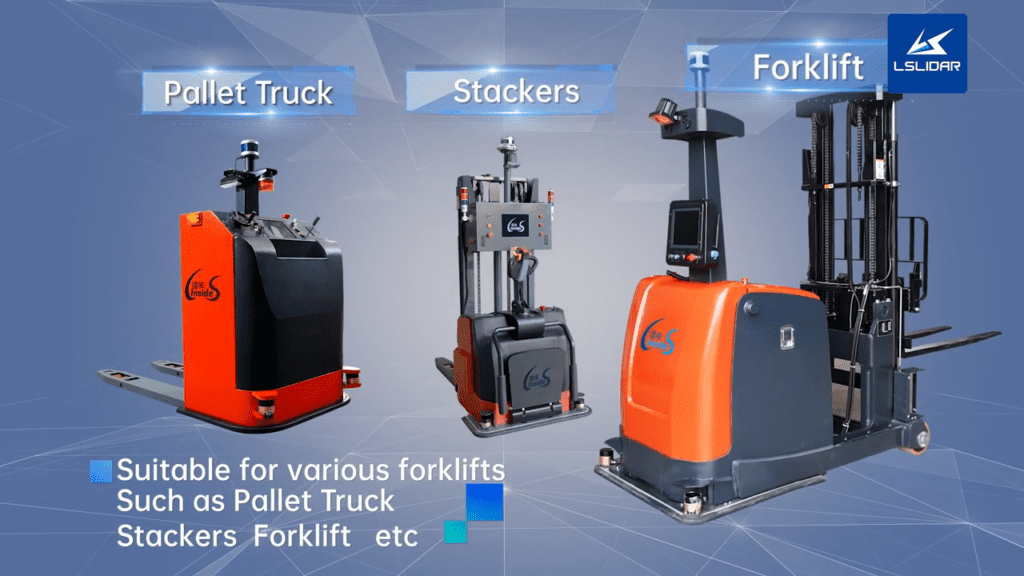
Things to Consider When Buying an Automated Forklift
How Does Automated Forklift Work?
Lidar scanners are very helpful and have even bridged the market to help with automating forklifts. Whether you’re in the market for a new forklift or are considering buying a new forklift, it’s important to understand how it works. A robotic forklift is a machine that is capable of performing tasks with little human intervention. This is possible because the robot is able to move without being limited by fixed paths. These types of lift trucks are able to automatically receive and replenish items. They are also capable of being preset to follow specific processes or systems.
Using Automatic Receiving and Replenishment of Forklifts, companies can minimize excess stock, reduce travel time and costs, and maintain healthy inventory. These systems can also help organizations investigate store performance.
Automated forklifts can detect and alert humans to obstacles they have not seen in the past, and can choose the most efficient travel path. They also can retrieve loads with pinpoint accuracy, which can eliminate the ergonomic impact of repetitive tasks.
Some companies have also partnered with specialized tech companies, such as Vecna Robotics, to implement a robotic forklift fleet. Vecna Robotics’ Autonomous Mobile Robots can adjust their routes as the path to their destination changes. They choose an alternate path when route changes occur, which eliminates remapping.
Automated Forklift Maintenance requirements are similar to manual forklifts
Purchasing an automated forklift can be costly, so it’s important to choose wisely. Aside from the initial price, there are other factors to consider, such as maintenance and repair. In addition, the forklift should be integrated with a warehouse management system to ensure smoother operations.
Regardless of whether you’re using manual or automated forklifts, you’ll need to follow specific maintenance procedures to ensure safe and productive operation. These procedures can help reduce accidents and injuries.
To begin, ensure that the operator receives proper training. This can be done through a third-party organisation or through an organised training course.
In addition, you should conduct pre-shift inspections on your automated forklifts. These inspections will help you identify small problems before they become large problems. This will help ensure that your equipment operates at optimal levels and keep your workers safe.
Automated forklifts are generally powered by gas or electric. In addition, they use sensors to help ensure safe operation. To properly monitor and maintain these automated vehicles, you’ll need to follow service procedures that follow the guidelines set by your equipment provider.
There are three main categories of automated forklift maintenance. The first category includes dual-mode automated forklifts, which have the same mechanical components and parts as manual forklifts. These vehicles should be included in regular service programs.
Cost of repair of Automated Forklift
Whether you have a manual forklift or an automated forklift, you need to take care of it. Not doing so can cost you money. Taking care of your forklift can make it last longer and increase its useful life.
An automated forklift has many of the same components as a manual forklift, including sensors to keep it safe. These sensors need to be regularly maintained to ensure that they work properly.
A forklift that is not functioning properly can slow down workflows. In addition, it can damage property and cause safety problems. You need to know what to look for to make sure that you do not encounter these issues.
A good fleet management system can help you keep track of your forklifts. You can also use the information gleaned to identify trends and find ways to reduce breakdowns. This may include regular inspections and a proactive approach to repairs.
A dual-mode automated forklift has many of the same mechanical parts as a manual forklift. These parts are also crucial to the safe operation of the machine.
Integration with warehouse management system
Choosing the right technologies can help you achieve efficiency in your warehouse. Warehouses often have high labor costs, and automating your processes can reduce these costs. It can also improve your safety and increase staff productivity.
Warehouse automation is the process of replacing manual operations with software. The goal is to create a more efficient warehouse operation that reduces product handling costs, improves reliability, and makes the best use of storage space. It is also a means of addressing labor shortages.
Warehouse management systems allow businesses to monitor inventory movements and record locations. Data can be gathered in several formats, and it should be available to the entire enterprise. It should also be integrated with warehouse equipment. These solutions can include electronic data interchange systems, radio frequency hardware, and automation equipment.
Automated transportation technology increases the speed and reliability of your transportation process. This is especially important in dark warehouses, where the inflow and outflow traffic is high. The technology can also reduce the amount of human error in high-volume situations.

